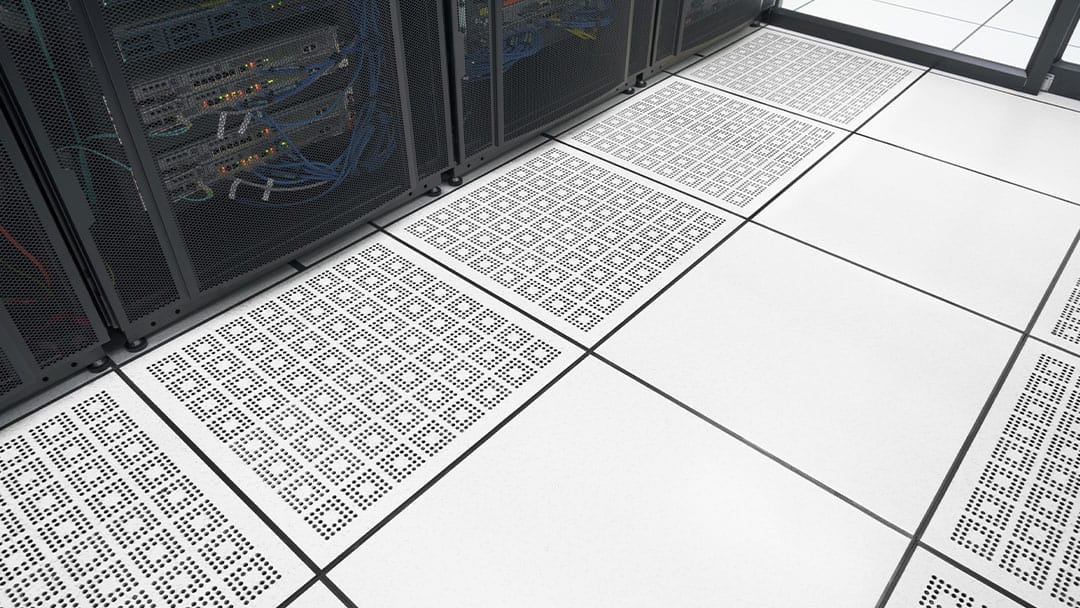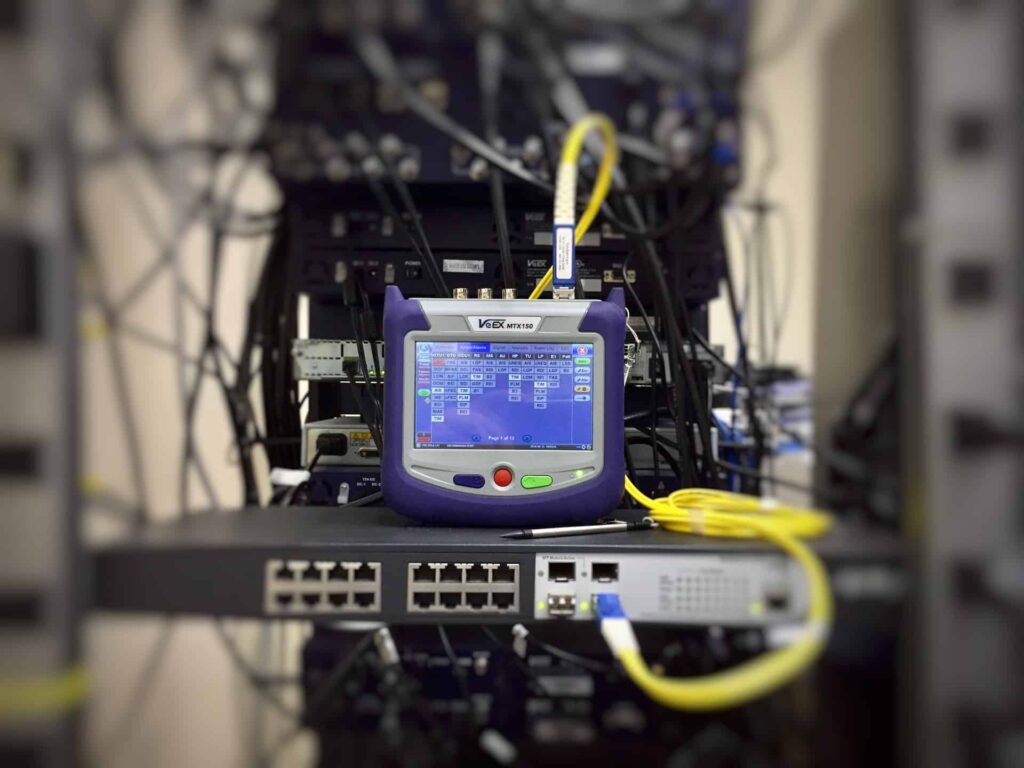The raised floor data center concept is not new. IBM pioneered the first raised floor data system concept over 65 years ago.
IBM developed its own proprietary and full-room-sized computer systems in the early 1950s. And within a few years, the burgeoning computer corporation encountered a severe and costly problem.
In 1956, IBM had created a new computer prototype system that was heavier than previous models. And the new computer prototype overheated quickly.
Additionally, the computer prototype’s weight, size, and dimensional specifications made it difficult for IBM technicians to access necessary wiring and other components.
And it was in the very same year, 1956, that IBM commissioned a company to help them solve this problem. And so, the very first raised floor data center prototypes were then conceptualized and built.
However, it was not until the 1970s that the raised floor data center concept became an industry-wide practice.
Raised flooring in a typical data center is equivalent to a false floor system. The raised floor is actually an elevated floor system that can be elevated multiple inches or feet above the real floor.
Raised floor systems keep data centers running efficiently. Internet traffic increased exponentially on a global scale by over 40% in 2020. And for additional context, it must be appreciated that the majority of the world’s IP traffic is routed through data centers.
So, now that you know that raised flooring is an industry-wide standard in the world, why should your business install have raised flooring in your data center?
Here are five reasons.
Do you need help planning, developing, and building your data center? Contact C&C today.
Related: Data Center Cabling Best Practices Guide
Cooler Operations
The computer servers in data centers generate intense amounts of heat energy when in operation.
And since we have established that most corporate data centers are responsible for routing most of the world’s IP traffic, the heat generation problem in data centers will only get progressively worse in the future without mitigation.
The average data center server system generates heat from 68 degrees Fahrenheit (20 Celsius.) to 72 degrees Fahrenheit (22.2 Celsius.)
However, data center equipment is designed to be durable, even when generating intense amounts of heat. The average data center server system can operate when generating heat during operation as high as 115 degrees Fahrenheit (46.1 Celsius.)
However, such super-heated environments can make it uncomfortable to work near or perform scheduled data center maintenance.
Raised flooring systems disperse ambient heat and bring down the temperatures generated by data center servers. Perforated raised floor tiles can distribute heat and enhance airflow management, and reduce data center temperatures.
Energy Savings
Ample operating floor space in data centers that can accommodate raised flooring and distancing between computers and server units can significantly decrease energy bills.
Additionally, the smaller the data center, the likelier the higher energy bills will result.
A data center with 50,000 square feet of space could generate an annual energy bill of $5,467.
Meanwhile, a data center with anywhere between 500 to 5,000 square feet of operating space could generate an annual energy bill of almost $26,500 or more.
Compared to a smaller-sized data center, a data center with a more extensive square footage operating facility and raised flooring can save as much as 64% on their energy bills.
Increased spacing between data center equipment cuts down on ambient heat and generates cooling airflow.
Greater Savings on Data Center Cooling Expenses
Most data centers employ the use of expensive cooling equipment in their facilities to prevent their server equipment from overheating and save on energy expenses.
In fact, over 43% of the average energy bill for most data center facilities is used to pay for various power provision systems and cooling equipment to mitigate intense heat generation from the equipment.
Half or most of the energy generated by data centers is used to power cooling centers and not necessarily the computer servers of the data centers.
Raised flooring in data centers can help to significantly reduce the energy bill expenses of data centers paying for expensive cooling equipment.
The average data center pays anywhere between $40,000 and $80,000 annually for its cooling equipment expenses.
And that the cooling center equipment expense estimate may be conservative. It could be a lot higher when additional maintenance and repair expenses are considered.
Room for Upgrading and Additional Equipment
Datacenter servers, computers, and all related computer equipment need to be upgraded, repaired, or replaced regularly.
As new technological innovations and inventions are introduced to the world all of the time, data centers need to have enough square footage space to accommodate such needs.
Additionally, data centers need to have enough vacant operating floor space to accommodate additional cabling or for maintenance and repair contractors to safely maneuver.
Raised flooring can accommodate these needs and more. Raised flooring can keep data centers looking tidy and uncluttered with all kinds of equipment hidden under the elevated floor.
And raised flooring can also accommodate the need to add additional cables and equipment as well.
Cleaning Maintenance Convenience
Raised floor data centers can also help to make regular cleaning schedules safer and more convenient.
Computer equipment can accumulate massive amounts of dust, dirt, and grime in a short amount of time. And a lot of dust and dirt can accumulate in large pieces of computer equipment that is tightly and closely situated near each other.
Raised flooring allows regular cleaning maintenance to be safer and easier via convenient access to clean data center equipment.
Cleaning expensive computer equipment is a lot easier when all to do is remove various flooring instead of trying to clean around equipment that is closely situated together.
Datacenter servers that are spaced apart under raised flooring are also safer for cleaning staff to maneuver. The cleaning staff is also less like to trip over or damage equipment.
And the kind of raised flooring used in a data center, like perforated, can also cut down on overall dust accumulation.
Is your company trying to open a data center? Don’t do it alone. Do you need assistance launching your data center? Contact C&C today.
Related: What is a Colocation Data Center? Colocation Facilities Guide
Last Updated on January 27, 2023 by Josh Mahan


![Best data center racks Best data center racks [buyer’s guide]](https://cc-techgroup.com/wp-content/uploads/2021/08/best-data-center-racks-1024x576.jpg)

